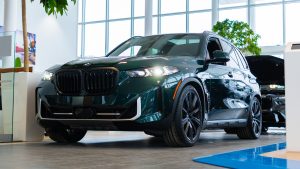Do you wonder what the difference is between different electric vehicle (EV) charging stations? Each offer different levels of charging power and compatibility with EV models. Let’s explore the differences between EV charging stations, including their voltage, plug types, and the types of electric vehicles they can charge.
Level 1 Charging Stations:
Voltage: 120 volts (standard household outlet)
Plug Type: SAE J1772 (J Plug) or NEMA 5-15 (standard three-prong outlet)
Compatibility: All electric vehicles
Level 1 charging stations are the most basic and accessible option for EV owners, requiring only a standard household outlet for charging. Level 1 charging offers around 8km of driving range per one hour charged and works best when charging your vehicle’s battery overnight or during extended periods of parking.
Level 2 Charging Stations:
Voltage: 240 volts
Plug Type: Various (SAE J1772, Tesla Wall Connector)
Compatibility: Most electric vehicles
Level 2 charging stations offer faster charging speeds compared to Level 1, offering around 30kms of driving range per one hour charged and making them ideal for home charging and public charging stations. These stations typically use a SAE J1772 connector, which is compatible with most electric vehicles on the market except for Teslas. Tesla owners can use a Tesla Wall Connector, which provides even faster charging speeds for Tesla vehicles.
Level 1 and level 2 chargers both use AC power meaning that most charging cable types can charge with both without issues.
DC Fast Charging Stations (Level 3):
Voltage: 480 volts (or higher)
Plug Type: CCS (Combined Charging System), CHAdeMO, Tesla Supercharger
Compatibility: Compatible vehicles only
DC Fast Charging stations, also known as Level 3 chargers, are designed for rapid charging on the go by offering up to 250 km of range per hour charged. These stations deliver high-voltage DC power directly to the vehicle’s battery, allowing for significantly faster charging times compared to Level 1 and Level 2 chargers. However, not all electric vehicles are compatible with DC Fast Charging because of the connectors used, so it’s essential to check your vehicle’s specifications before using these stations. For example, Tesla has their own type of connector for level 3 charging.
The Combined Charging System (CCS) connector is the most common for DC charging and can also works with AC charging. It has become a standard for charging connectors to ensure that all EVs can work with them and charge with any charging station.
Read more: What is Combined Charging System (CCS)?
Learn more about the different plug types at ChargeHub!

Understanding the differences between levels of charging stations is essential for you to decide how you would like to charge your electric vehicle. Whether you’re charging at home, work, or on the road, having access to the right charging infrastructure can help maximize your EV’s range and convenience while minimizing charging times!


